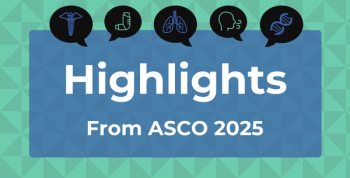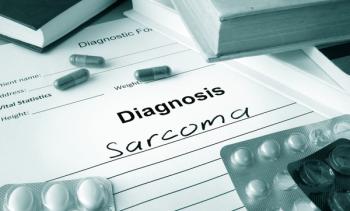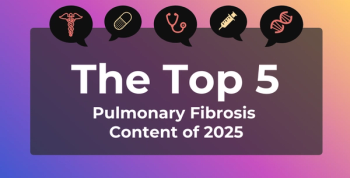
5 Rare Disorders Named for Pioneering Female Scientists
Key Takeaways
- Noonan Syndrome, identified by Dr. Jacqueline A. Noonan, involves congenital heart defects and is linked to PTPN11 gene mutations.
- Cronkhite-Canada Syndrome, discovered by Dr. Wilma Jeanne Canada, is characterized by gastrointestinal polyposis and dermatological symptoms, primarily affecting males.
Explore 5 rare genetic and neurological disorders named after pioneering women in medicine, highlighting their significant contributions to previously unknown conditions.
Each year, May is recognized as National Women’s Health Month—or alternatively, Women’s Health Awareness Month—with the week beginning on Mother’s Day observed as National Women’s Health Week. For 2025, as designated by HHS, the theme for this awareness month is, “Prioritizing Women’s Health: Caring for Mind and Body.”1 In the spirit of honoring women who have shaped the field of medicine, this article spotlights 5 genetic and neurological conditions named for the pioneering female scientists whose discoveries have advanced our understanding of human health.
Noonan Syndrome
Pioneering pediatric cardiologist Jaqueline A. Noonan, MD, was recognized for her contributions to characterizing this rare genetic disorder and for recognizing that it occurs in male and female individuals, following the publication of her case study on 19 patients in American Journal of Diseases of Children who had in common noncardiac malformations with congenital heart disease.2,3 Defining characteristics of Noonan syndrome include short stature, a broad or webbed neck, skeletal malformations, ptosis, and pinnae, or posteriorly rotated ears.4 Congenital cardiac defects are another common defining feature, and most cases are considered caused by mutations in the PTPN11 gene.
Cronkhite-Canada Syndrome
Although its exact cause remains unknown, common triggers of this progressive noninherited disorder characterized by gastrointestinal hamartomatous polyposis and dermatological manifestations are reported to be physical stress and emotional stress.5 Considered an extremely rare disease, and sporadic in nature, the typical age of onset is 60 years and it is seen primarily in male individuals who exhibit the symptoms of nail dystrophy, hair loss, and impaired or reduced sense of taste. Primary treatment comprises systemic corticosteroids and immune-modulating agents. Wilma Jeanne Canada, MD, a professor of radiology, is credited, along with Leonard Wolsey Cronkhite Jr, MD, of first discovering the syndrome in 1955, publishing their findings in The New England Journal of Medicine on 2 female patients, both of whom died of starvation.6
Canavan Disease
Genetically based, this rare autosomal, recessive, inherited disorder is marked by common symptoms that include onset in infancy between ages 3 and 6 months, macrocephaly, progressive degeneration of white matter in the brain—although grey matter is also affected—and mutations in the ASPA gene.7 A type of leukodystrophy in which the gene mutation leads to lack of the aspartoacylase enzyme, which is responsible for breaking down N-acetyl-aspartate in the brain, affected infants typically do not form motor skills, have swallowing difficulties, and develop sleep disturbances.8 It is named for neuropathologist Myrtelle May Canavan, MD, who began her medical career in 1905 and who first discovered the condition in 1931 when she recognized its spongy changes in the brain.9
Louis-Bar Syndrome
Denise Louis-Bar, MD, a Belgian neurologist and neuropsychiatrist, is credited with comprehensively describing the eponymous disorder in 1941,10 when she published a case study of a child with ataxia and telangiestasia. Her later work would focus on helping individuals with intellectual disabilities. Also known as ataxia-telangiectasia, this rare inherited autosomal genetic disorder targets both the nervous system and the immune system. It is neurogenerative and progressive, with primary symptoms that include slurred speech, trouble walking, and muscle twitching.11 To inherit Louis-Bar, a patient must inherit copies of the mutated ATM gene from both parents, frequently demonstrating signs of the syndrome by age 5. There is no cure or a way to slow progression, with treatment being supportive in nature and encompassing physical therapy that focuses on flexibility and speech therapy meant to teach controlled breathing.12
Andersen Disease
Also known as glycogen storage disease type IV, a metabolic disorder, Andersen disease is a rare, inherited disorder in which abnormal levels of glycogen accumulate and interfere with organ and tissue function in the body—in particular, the liver and muscles.13 In 1956, pediatrician and pathologist Dorothy Hansine Andersen, MD, DMSc, initially described the condition eventually named in her honor when she published her findings in Laboratory Investigation.14 Liver failure is the primary outcome, and it is precipitated by cirrhosis. Severe disease can also bring on cardiomyopathy. Mutations in the GBE1 gene are implicated as the primary cause of severe symptoms and earlier disease onset, although correlations between clinical presentation and mutation type are still not well defined.15 Initial presentation most often occurs before age 18 months, and differential diagnosis is recommended.16
References
1. National Women’s Health Week 2025. Office on Women’s Health. Updated May 21, 2025. Accessed May 22, 2025.
2. Meštrović T. Noonan syndrome history. News-Medical.Net. August 23, 2018. Accessed May 22, 2025.
3. Noonan JA. Hypertelorism with Turner phenotype. A new syndrome with associated congenital heart disease. Am J Dis Child. 1968;116(4):373-380. doi:10.1001/archpedi.1968.02100020377005
4. Throwback Thursday: Dr. Jacqueline A. Noonan. UK HealthCare. February 5, 2020. Accessed May 22, 2025.
5. Wu B, Oakley A. Cronkhite–Canada syndrome. DermNet. December 2016. Accessed May 22, 2025.
6. Cronkhite LW, Canada WJ. Generalized gastrointestinal polyposis; an unusual syndrome of polyposis, pigmentation, alopecia and onychotrophia. N Engl J Med. 1955;252(24):1011-1015. doi:10.1056/NEJM195506162522401
7. Canavan disease. Canavan Foundation. Accessed May 22, 2025.
8. Canavan disease. MedlinePlus. Updated April 1, 2015. Accessed May 22, 2025.
9. Dr. Myrtelle May Canavan. Changing the Face of Medicine. October 14, 2003. Accessed May 22, 2025.
10. Stuart-Smith J, Cadogan M. Denise Louis-Bar. Life in the Fastlane. November 3, 2020. Accessed May 22, 2025.
11. Ataxia-telangiestasia. Cleveland Clinic. Accessed May 22, 2025.
12. Ataxia telangiestasia. National Institute of Neurological Disorders and Stroke. Accessed May 22, 2025.
13. Glycogen storage disease. Johns Hopkins Medicine. Accessed May 22, 2025.
14. Andersen DH. Familial cirrhosis of the liver with storage of abnormal glycogen. Lab Invest. 1956;5(1):11-20
15. Ierardi-Curto LA. Andersen’s disease. EBSCO. 2024. Accessed May 22, 2025.
16. Marsden D. Andersen disease (GSD IV). National Organization for Rare Disorders. Updated April 3, 2012. Accessed May 22, 2025.
Newsletter
Stay ahead of policy, cost, and value—subscribe to AJMC for expert insights at the intersection of clinical care and health economics.







































